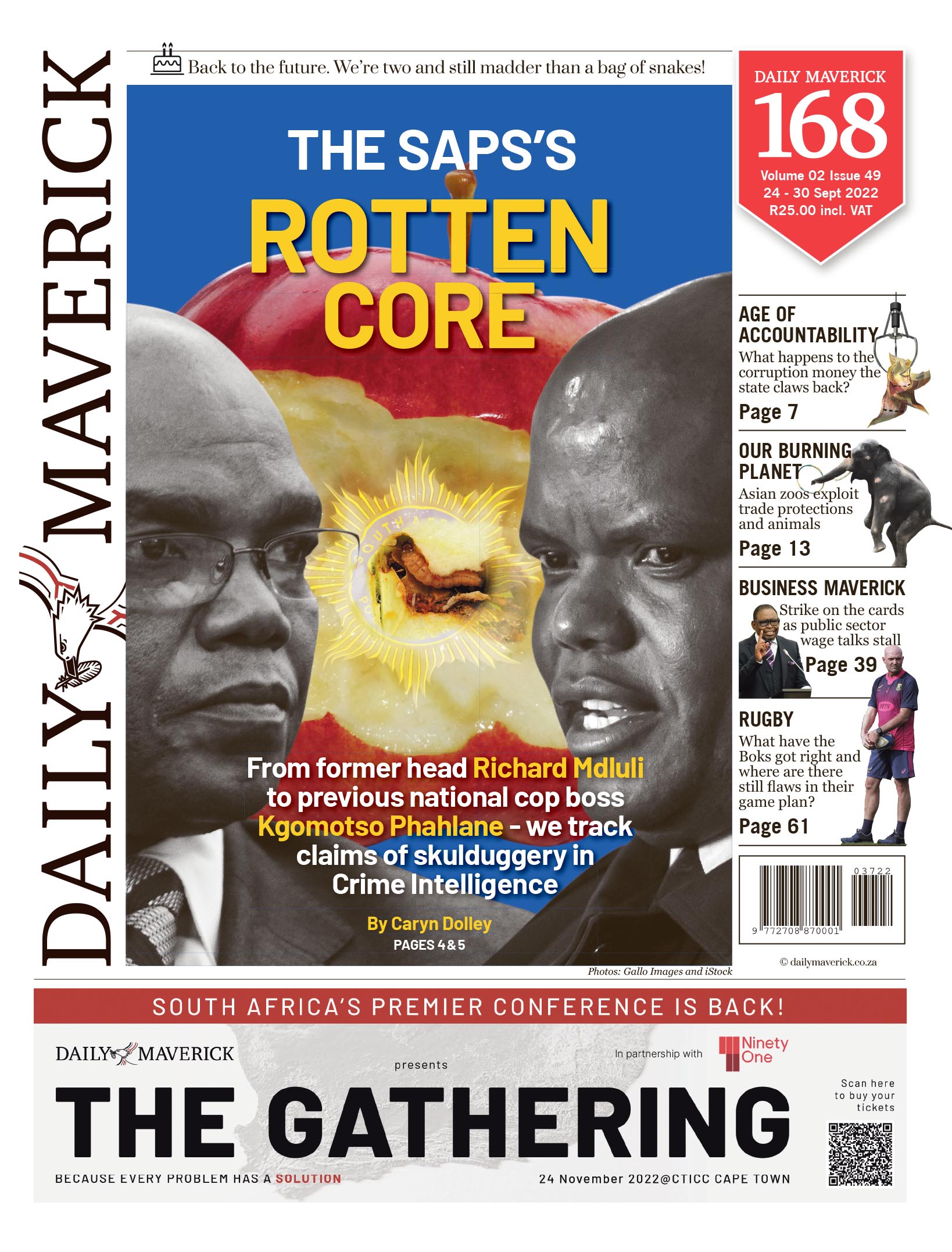It’s another step towards supersizing brutalist security measures and includes ad hoc fencing that’s cabled-tied to The Arch for The Arch monument honouring the late Archbishop Emeritus Desmond Tutu, no-entry signs, precinct escorts and rolls of razor wire.
It’s all due to SAPS incompetence.
If trespassers succeed it’s because of police ineptitude in the access control they are traditionally in charge of at the parliamentary gates and around the perimeter. When the 2 January blaze devastated the National Assembly and more, the SAPS was in charge. Patrols of the Parliamentary Protection Services (PPS), the national legislature’s in-house service, were cancelled over weekends and public holidays.
It needs to be asked why. And why, nine months later, Parliament has not done its own investigations.
Parliament’s presiding officers are in full control of the precinct of the national legislature and the executive’s security services may only enter with their “express approval”, according to the 2004 Powers, Privileges and Immunities of Parliament and Provincial Legislatures Act. It’s unlawful for police to operate on the parliamentary precinct without such express permission. Not even summonses are served without prior arrangements and approval.
No less important is that – on public record – Parliament as a whole is not a national key point, or to use the now legislated correct lingo, critical infrastructure.
Tuynhuys, the presidential offices in the parliamentary precinct, is one, as are the 120 Plein Street ministerial offices, and the so-called Parliament House, effectively the chamber, although it’s unclear if that’s the National Assembly, Old Assembly or National Council of Provinces.
Many more buildings make up the parliamentary precinct.
The classification emerged from a January 2015 list made public after court action from Right2Know Campaign. It puts Parliament alongside the Union Buildings, the SABC, Onderstepoort, various Transnet pipelines and commercial company-run oil depots, and the international airports in Johannesburg, Durban and Cape Town.
Visit Daily Maverick’s home page for more news, analysis and investigations
To anyone’s knowledge, the list has not been updated. At least not publicly. It should have been, according to the 2019 Critical Infrastructure Protection Act, which replaced the apartheid-era National Key Points Act from April 2022.
Sections 21(3) and 21(5) respectively require the SAPS national commissioner to enter a critical infrastructure declaration, or termination, into a register that “must be accessible to the public”, and the police minister “must, by notice in the (Government) Gazette, publish such particulars … regarding infrastructure, which has been declared as critical infrastructure and when such declaration is terminated.”
To the best of anyone’s recollection, no such Government Gazette notice is published, nor have the required certificates been handed over to the institution. Thus Parliament, as a whole, is not a critical infrastructure. But it’s no secret that Pretoria police generals have long bristled at Parliament not being under their control, as part of their “protecting the authority of the state” law-and-order tub-thumping. Never mind the constitutional focus on people’s safety and security.
The September 2018 suicide of parliamentary manager Lennox Garane after sustained bullying by seniors – they continue working at Parliament – was (mis)used by the police to gain a foothold.
The 2 January fire was used for a further crackdown by the SAPS, including blocking off access to significant sections of Government Avenue and the Company’s Garden.
The mid-June 2022 trespassing breach caught police deployed on the precinct off guard, again – and was leveraged to roll out more razor wire.
It’s very unlike the UK’s House of Commons – target of actual terror attacks – where tens of thousands of people queued into Westminster Hall, part of that parliament’s estate, for the lying-in-state of the late Queen Elizabeth. Or the Scottish parliament that hosted the World Press Photo exhibit for visitors who only had to pass through X-ray machines.
Similarly, parliaments in Helsinki, Berlin and elsewhere are an integrated part of the city landscape (yes, I visit legislatures while on holiday) as security is ensured with cameras and in-house protection services, no doubt cooperating with police that, however, remain outside.
Back at South Africa’s Parliament, the police seem to treat the precinct as their playground – or battleground. The case of the male sergeant on the precinct assaulting a woman sergeant after their affair soured is reportedly in mediation.
Never mind snoozing on duty: one cop was found with a spliff in the loo, according to corridor talk.
Given the law, Parliament’s presiding officers must have given express approval for such overbearing security. If Parliament’s presiding officers did not, then police are acting on their own – and doing so contravenes the law and the spirit of South Africa’s constitutional democracy. DM168
This story first appeared in our weekly Daily Maverick 168 newspaper, which is available countrywide for R25.

















 Become an Insider
Become an Insider
Comments - Please login in order to comment.